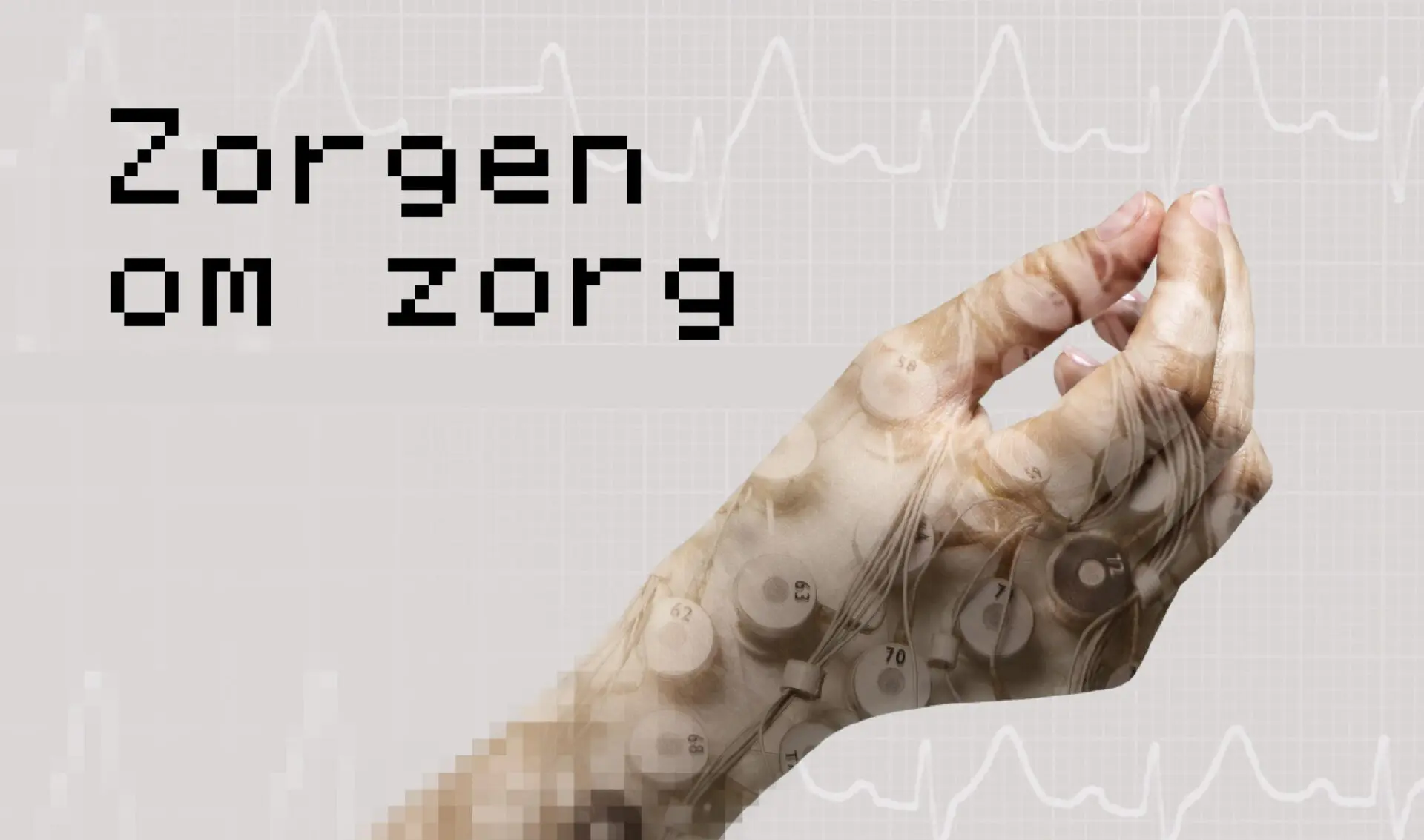Who Ernst Kuipers
Ernst Kuipers studied Medicine in Groningen and obtained his PhD at the VUmc. In 2000 he became a professor at Erasmus University Rotterdam and Department head at Erasmus MC. In 2012 he was appointed member of the Board, and from 2013 to 2022 he chaired the Board. During the corona crisis he became nationally known as chairman of the National Acute Care Network. In Cabinet Rutte IV he is Minister of Health, Welfare and Sport.
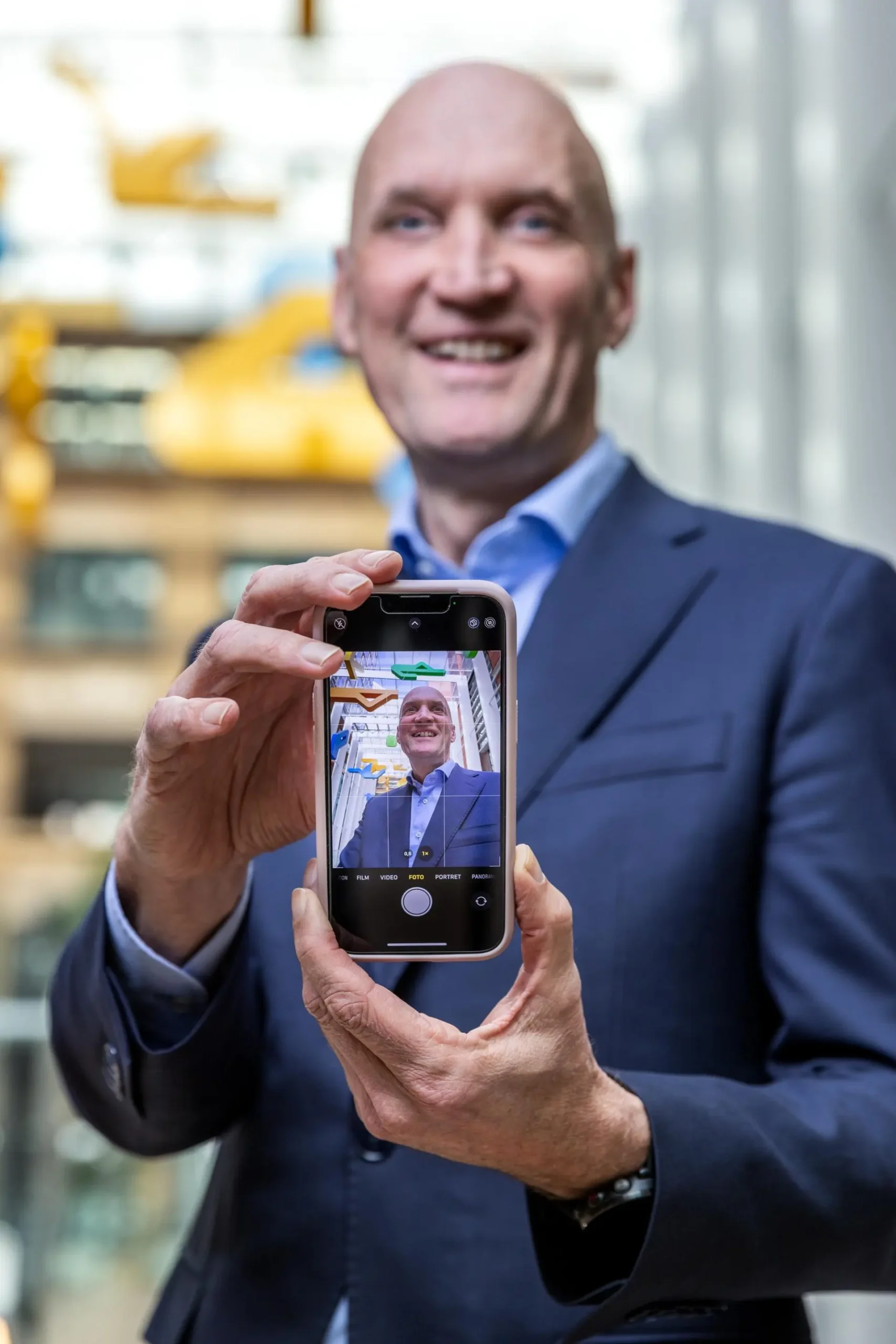
© Marieke de Lorijn
How could digital technology help ease the pressure on healthcare workers?
Kleinsmann “I’ve done a lot of research on Remote Patient Management, or ways to connect care given in the hospital with remote care at home. The Box (see article on page 42: Meet Dr Box) is a particularly elegant and simple approach. The Box contains technology that patients can use both in the hospital and at home, enabling them to perform some routine checkups themselves, so that healthcare workers can devote more time to patients who are struggling. Scaling up this concept would pave the road for a massive reduction in the workloads of healthcare workers.
Kuipers “It’s a great example of how far technology has come and the phenomenal things that technology is capable of. However, if easing the pressure on healthcare workers is your goal, the quality of healthcare should be the first port of call. Teach patients about what it means to be healthy and empower them to monitor their own health, every day if necessary. More self-reliant patients are necessarily less dependent on healthcare professionals. I recently spoke to someone with diabetes who had a sensor in his arm that constantly took his blood sugar levels. As a result, he could track his own blood sugar levels without the help of an internist or diabetes specialist and even managed to improve quality of care. Ultimately, similar developments will help ease the pressure on healthcare workers: prevention and early detection are potent ways to drive down the demand for medical attention.”
‘For me, the social changes required in the healthcare system are no less challenging that the technological shift we will have to make’
Are there other inspiring ways to alleviate the burden on the healthcare system?
Kuipers “Absolutely. There are countless ways. Our current healthcare system, for instance, is highly labour-intensive, and the number of people in need of care has increased gradually over time. Now that people are living longer, chronic disease has become increasingly common. Simultaneously, the number of people with jobs in the healthcare system has also grown steady. Currently, about 1 in 6 people with jobs in the Netherlands work in healthcare. Without any changes, this number would have to grow to a whopping 1 in 4 people by 2040. That’s not going to happen, so we will have to provide more care with the same level of human effort, while scaling up prevention. Launching regional healthcare coordination centres is another way of easing the pressure on the healthcare systems. These traffic control centres have continuous, real-time insight into the availability of healthcare resources, answering questions like: How crowded is the out-of-hours GP service? How many beds are there available? How many free beds are there in the nursing home? How many are there in the hospital? How crowded is the A&E? Where are the ambulances? This improves insight into healthcare capacity and makes it possible to rout people to the right professional immediately, so they will not have to visit the A&E, out-of-hours GP service or local health centre first.”
However, many of these regional digital initiatives fail to successfully make the leap to the national level. Why is that?
Kleinsmann “It is a complex task. For me, the social changes required in the healthcare system are no less challenging than the technological shift we will have to make. I’m an industrial designer, so I never consider one without looking at the other, too. I’ve found that healthcare professionals prefer having highly specific technologies designed for individual departments or diseases, but when you’re dealing with chronically ill patients or people with multiple diseases, the last thing you want is for the GP to recommend two completely different tools. An important part of launching regional healthcare networks will be to aim at overarching digitisation. And we haven’t even mentioned data exchange yet. Encouraging data sharing between healthcare facilities and between patients and healthcare facilities would allow us to vastly improve our understanding of how diseases progress and how people behave. Developing predictive models and unleashing them on the data would then unlock tremendous quality gains.”
E-healthmonitor
According to one estimate, there are now over 250 thousand different health apps, ranging from simple pedometers to more sophisticated heart rate monitors that automatically transmit data to cardiologists. Since 2013, the annual E-health Monitor (published by RIVM, the Nivel research institute and the NeLL National eHealth Living Lab and commissioned by the Ministry of Health, Welfare and Sport) measures what digital care is available, how it is used and what healthcare providers and patients think of it. The 2022 survey found that more healthcare providers are using digital tools than the year before but that they have not yet been integrated into healthcare processes. However, more and more healthcare providers do believe that digital tools add value. The monitor argues that digital tools will have to be integrated into work processes if they are to become more commonplace. The benefits for patients and healthcare providers should also be clearer. Healthcare providers feel it is important for digital care to reduce workloads so they have more time for patients. Furthermore, it is essential that digital healthcare tools be easy for both patients and providers to use. (Source: E-healthmonitor 2022)
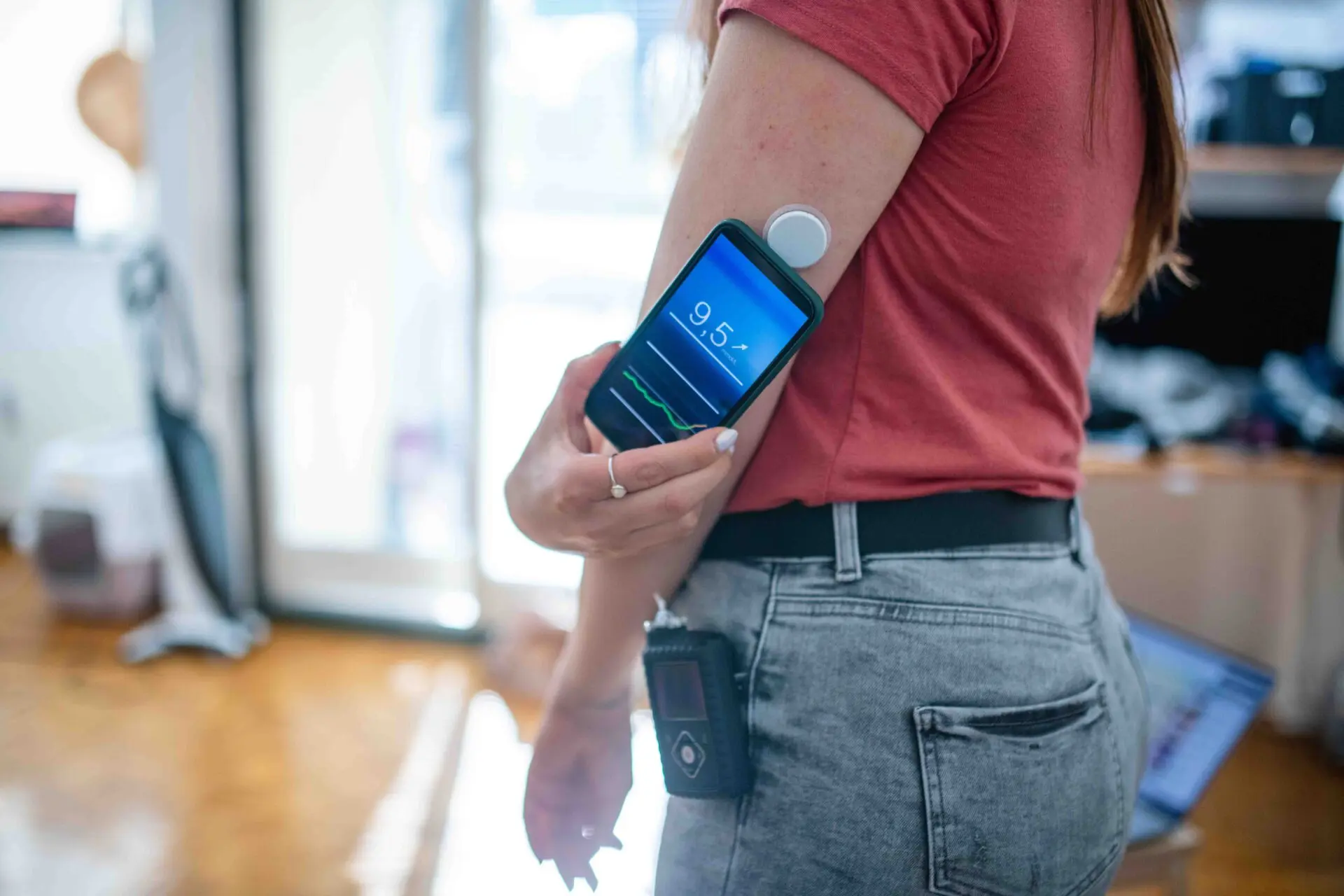
Glucose sensors let you measure your blood sugar levels yourself and track them on your smartphone. © AzmanJaka
Who is Maaike Kleinsmann Maaike Kleinsmann studied Industrial Design Engineering at TU Delft and also obtained her PhD here. In 2020, she was appointed professor of Design for Digital Transformation. She leads the Delft-based CardioLab, a collaboration with Philips Design, supported by the Heart Foundation. She is also theme leader Cardio Tech within the Delft Health Initiative.
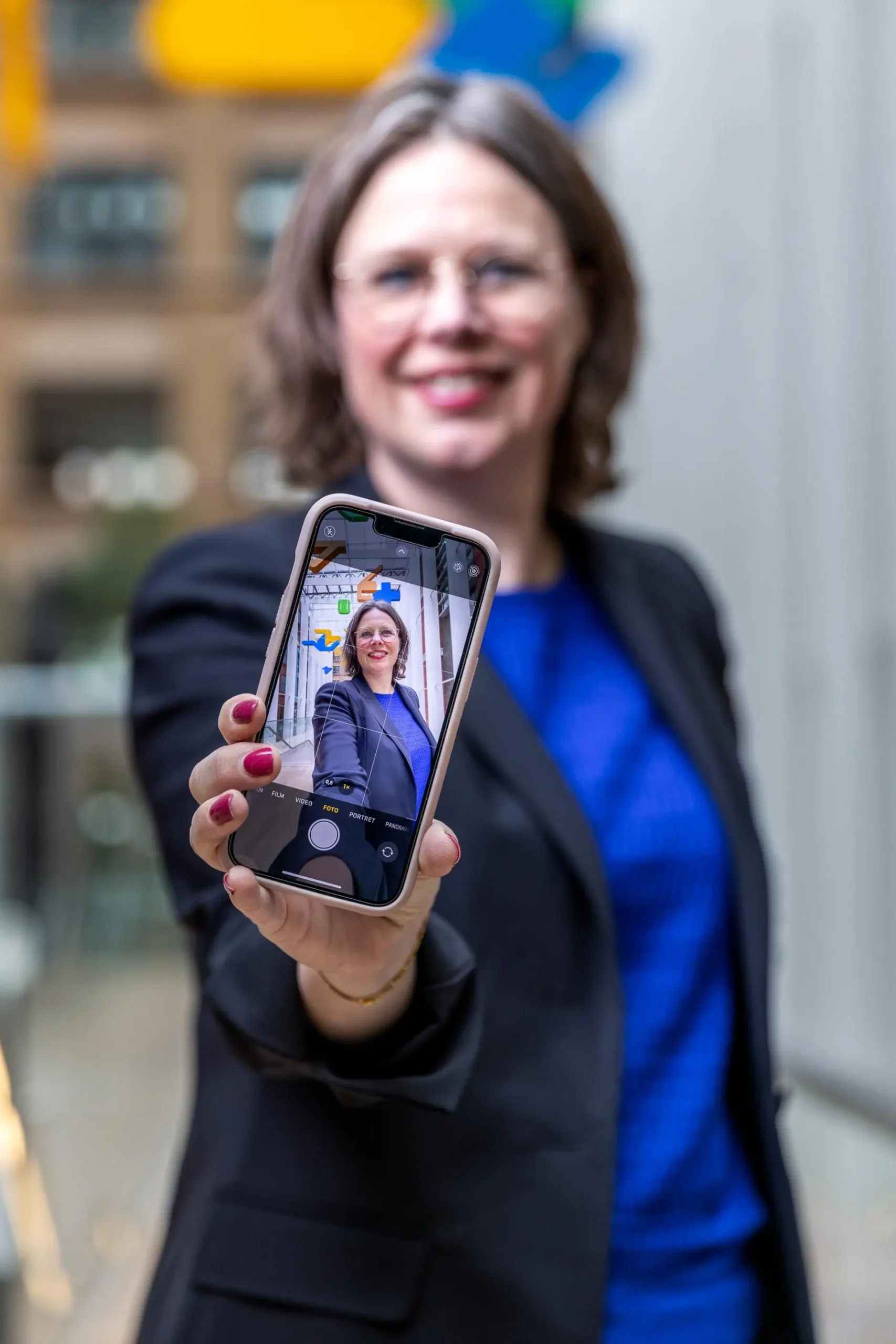
© Marieke de Lorijn
The question is: how do you extend regional agreements on data collection and sharing to the national level? Who should quarterback this process?
Kuipers “My message for Maaike and her colleagues is simple: step up, designers and technicians, and take the lead. If you help everyone invent their own wheel, we’ll end up with tonnes of distinct wheels instead of one moving bike. Engineers should have the courage to say: we’re going to make a universal product that’s the best possible fit for everyone. Over twenty years ago, I worked on a project to launch a hospital’s first Electronic Health Record. We asked each department exactly what they were looking for and created custom modules for every one. We ended up with 240 different modules that had to be integrated into a single system: an impossible task. So what approach would work? You could take another tour of the hospital and ask everyone what features they need and how they would rank certain aspects. At some point, you end up with a system that meets everyone’s needs as closely as possible.”
It sounds very simple. Would that solution work for you, Maaike?
Kleinsmann “I’m delighted with that answer. We’ve started positioning ourselves, but need to prevent a tech push. It is important to co-create technology together with physicians, health insurers, patients and healthcare workers of the future and include everyone in the journey to improve care. In our Growth Fund application, we included a plan for remote care centres that analyse data from remote patient management systems, with or without artificial intelligence. With these centres, we want to explore whether we can use smart technology to give nurses working the night shift time to catch some sleep while the patients are stable and wake them up when necessary. At the same time, these centres could reduce workloads.”
‘My message for Maaike and her colleagues is simple: step up, designers and technicians, and take the lead.’
So in a world where nurses have to do fewer routine tasks and can provide higher-quality care: who is going to analyse all those technical data?
Kuipers “The Netherlands is at the forefront of education in medical technology and technical medicine, fields that fuse the domains of healthcare and technology. Apart from a nurse, physician and domestic assistant, the healthcare team of the future will also feature a designer, a technical specialist, and a data expert.”
In the future, healthcare will be home to a large number of new disciplines, and yet we don’t consider them healthcare providers.
Kuipers “In the past, I’ve jokingly told Delft students that they’re the doctors and nurses of the future and that they should wear that as a badge of honour. In my eyes, they too are healthcare providers.”
Kleinsmann “I also think that digitisation has created new healthcare jobs. It has given rise to the need for a new breed of medical technicians, although I hope that the overall healthcare workforce will not need to grow.”
Health & Care
TU Delft is working with medical professionals to improve the long-term sustainability of healthcare. Through research and innovation, TU Delft aims to improve patient care and the work of healthcare professionals, and to future-proof and crisis-proof our current healthcare system, which is complex and often inefficient. As part of the TU Delft Health Initiative, researchers collaborate in the fields of neurotech, cardiotech, oncotech and integrated technologies. TU’s education offerings also reflect its interest in health. The clinical technology programme is a collaboration between TU Delft, LUMC (Leiden) and Erasmus MC (Rotterdam). Clinical technologists have both medical and technical knowledge, bridging the gap between technology and patients. The above institutions also offer a joint master’s programme with two tracks: the imaging and intervention track focuses on two major trends in healthcare: early diagnosis and developing the most targeted patient-specific treatment possible. The sensing & stimulation track deals with techniques for closely monitoring and controlling patients’ health status.
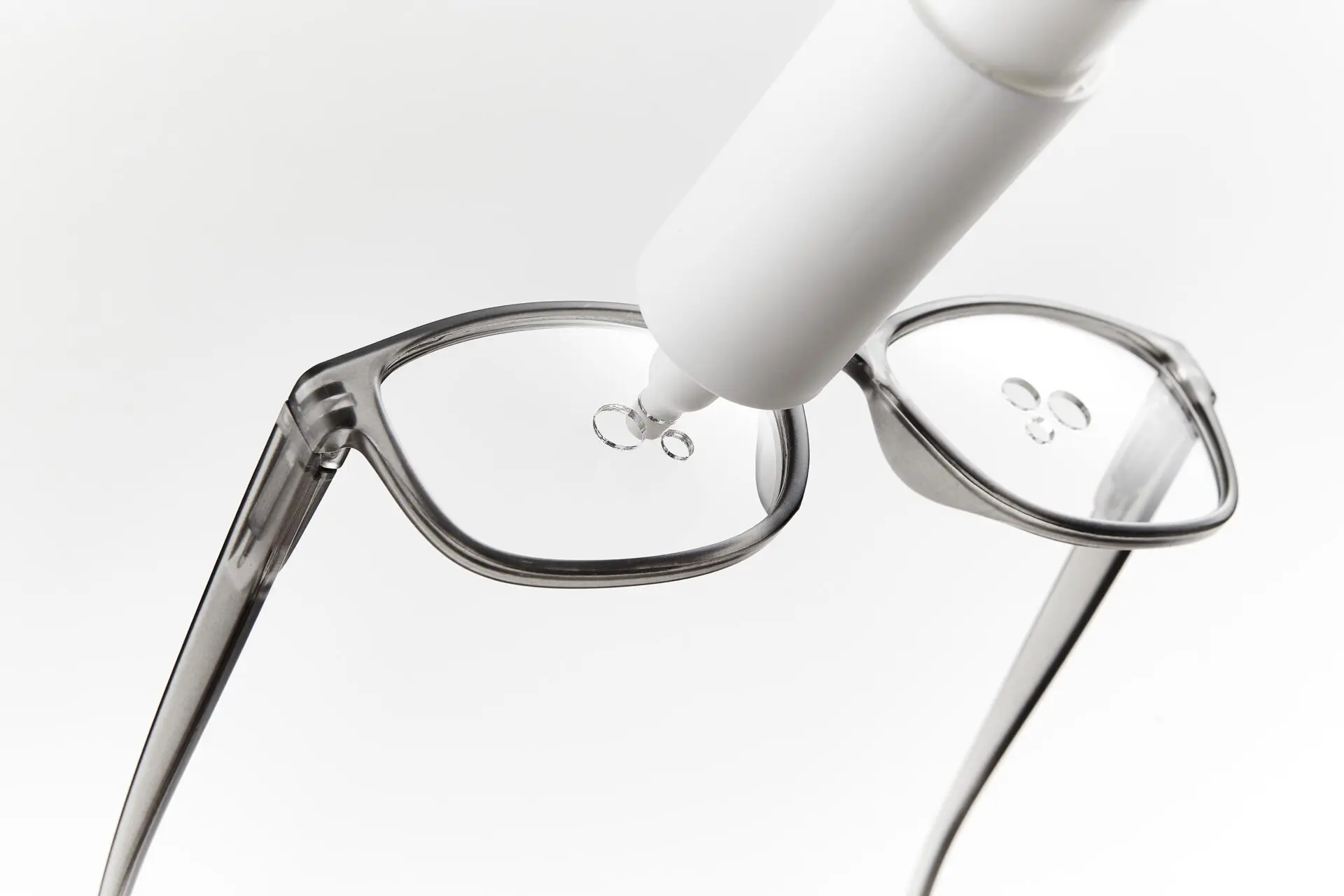
Eye-drop glasses are an innovation for people with eye problems. The glasses feature several apertures and were designed to securely fit all commonly used sizes of bottles and pumps.
© Druppelbril
HEALTH & CARE
So there will not be an influx of more people?
Kuipers “When they imagine the intersection of healthcare and technology, people usually think of new scanners, X-ray machines or surgical robots. Maaike and her colleagues are a prime example of the breadth of the field. Healthcare is not just about special equipment, but also about data, prediction systems, monitoring systems and logistics. Many innovative solutions seem simple but are actually highly relevant. Many elderly people, for instance, need eye drops four times a day but cannot administer these themselves, which means that a community carer has to come by four times a day. Special glasses have now been developed that enable people to administer the drops themselves, saving a lot of work. Without people, this new technology would never have been developed.”
‘The healthcare team of the future also features a designer, a technical specialist, and a data expert’
How can digital technology help ease the pressure on the healthcare system most effectively?
Kuipers “Technology can help GPs, physiotherapists, dentists, long-term carers, nursing homes, community carers, mental healthcare professionals, hospitals and ambulance workers alike. There are myriad possibilities in countless different domains. Recently, for example, technology has helped turn ambulances into rolling hospitals or A&Es in terms of diagnostics, prediction and treatment. From a completely different angle, data can also be used to make smarter decisions, e.g. on ambulance deployment. Soon, algorithms will be able to predict where ambulances are most likely to be needed and where to station ambulances to optimise response times. I could go on and on.”
Then quite a few new disciplines will secretly work in that healthcare. Only we don’t call those people healthcare providers.
Kleinsmann “Making urgent care plannable is one of the more promising steps we are looking to take. We have already achieved great results with planning perioperative care and can now keep monitoring patients who have just had surgery from home. Because these patients are closely monitored, you can predict when they need to be readmitted and send an ambulance to pick them up. Another example is that doctors often monitor patients who are about to be picked up by an ambulance remotely, so that they can estimate whether the patient will have to be admitted or whether the ambulance workers can provide the necessary care. In the latter case, the patient may be able to stay at home for the meantime and go to the hospital for a check-up the next day. There’s a lot of room for improvement there.”
Has the pandemic accelerated digitisation?
Kuipers “Absolutely. Very much so. The capacity shortage that prevented hospitals from admitting all COVID patients played a major role in accelerating a digital revolution. Many patients were sent home with a special box filled with oxygen cylinders and medication. They were also monitored remotely, which meant that a single nurse could watch over dozens of patients instead of the usual four.”
All we can do is hope that digitisation continues full speed ahead.
Kuipers It can be done. With engineers in the lead, I’d add for Delft Matters.”
Online learning Circular strategies in health care
The new “Apply Circular Economy Strategies in Healthcare” programme should enable the transition to a circular economy in healthcare. The programme consists of several courses: for MedTech suppliers designing circular products or services and for hospitals and healthcare organisations seeking to reduce waste and contribute to sustainable care. The courses will be offered from October 2023 via online-learning.tudelft.nl.
Start date: anytime, online self-study courses
Duur duration: 7 weeks (at your own pace)
Meer info

